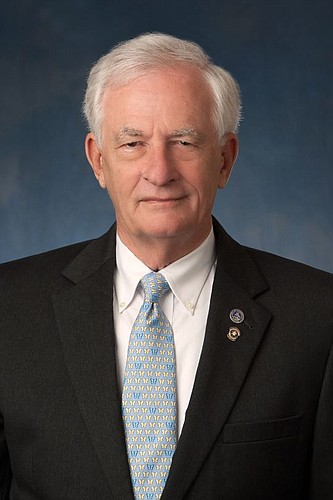
If you pay attention at even the most casual level, you know homicide is a major issue in Jacksonville, with 120 people killed in 2016.
As disturbing as that is, it pales in comparison to last year’s death by drug overdose figures.
The latest statistics from the Florida Department of Law Enforcement and the District 4 Medical Examiner’s Office show 345 people died from drug overdose from January-October 2016.
It gets worse.
The number of deaths from drug overdose has steadily increased annually for the past several years and predictions are 2017 may be another record-breaking year.
“It’s bad and it’s getting worse. It’s obvious to me this is a crisis that’s not getting much attention,” said City Council member Bill Gulliford.
He’s scheduled a meeting at 5:30 p.m. Thursday at City Hall to give the community the opportunity to start to understand and hopefully come up with a plan to stop the trend.
Gulliford said even at the beginning of his looking at the issue, it’s clear that drug overdose — and its precursor, addiction — exact a “horrible cost” to the community.
There’s crime related to addiction, including robbery and theft; employment issues such as lost productivity and workplace mishaps; and there are family issues, like separation and divorce.
While it would be difficult to compile complete statistics on the total cost of addiction, the Jacksonville Fire and Rescue Department will present a report on the cost of its services rendered to patients who are transported to the emergency room because they used opioids and/or opiates.
Those classes of drugs include codeine, heroin, morphine, opium and pharmaceutical narcotics oxycodone and hydrocodone.
Brands include Vicodin, Lortab, Demerol, Dilaudid, Percodan and Tylox.
In 2015, JFRD responded to 2,114 overdoses. In 2016, that went up to 3,411.
In another comparison, there were 250 overdose calls in January and February 2015, 402 in 2016 and 789 this year.
According to the department, paramedics are currently responding to at least triple the number of overdoses compared to 2014.
The cost per patient transport is $996 and that’s leading to an escalating fiscal impact on JFRD.
In 2015, transporting 1,903 overdose patients cost $1.9 million. In 2016, 3,156 overdose patients were transported at a cost of $3.15 million.
If the trend continues, the report states, JFRD should prepare to transport nearly 4,500 overdose patients this year at a cost of about $4.5 million.
In addition, emergency medical technicians are administering naloxone — a drug marketing as Narcan that is used to treat a person who is being transferred to an emergency room due to an possibly deadly opioid overdose — every two hours on average compared to every 10 hours in 2014.
From May through January, JFRD issued to rescue and advanced life support units $75,000 worth of the drug and $47,000 worth was issued from Nov. 1-Jan. 31.
Another group that will participate Thursday is Drug Free Duval, an 8-year-old nonprofit that was established to address the consequences of alcohol abuse by teenagers.
The organization has expanded its scope to include other forms of substance abuse.
Executive Director Susan Pitman said it’s going to take the entire community to first understand and then address opioid addiction and overdose.
She also said the roots of the problem started years ago, and it’s going to take some time to get it under control.
About 20 years ago, Pitman said, the medical establishment began looking at a patient’s pain as something that should be avoided at all cost.
Doctors began prescribing narcotics as the standard protocol for even minor injuries and at the time, the addictive nature of the drugs wasn’t realized.
Soon, pain management was added to the medical school curriculum and later, medical care began to be rated based on their patient’s satisfaction with management of their discomfort. So was government reimbursement for treatment, which led to even more prescriptions for addictive pain-killers.
“That made pain the fifth vital sign,” Pitman said, joining heart rate, respiration, blood pressure and temperature.
About a year ago, Drug Free Duval formed the North Florida Rx and Heroin Task Force to study addiction and develop strategies to reduce its occurrence.
Pitman said physicians, pharmacists and counselors from the task force will be at the meeting Thursday in hopes of starting a community conversation about addiction and begin the process toward a solution.
The problem didn’t start overnight, and it won’t be quickly solved, she said. The solution will require patients to “change their expectation about pain” and for doctors to change how they approach treatment.
They also need to know how to avoid prescribing too much medication and for too long after an injury or procedure, both of which can lead to chemical dependency and possibly, overdose.
“The big win would be to require addiction training for all health care professionals,” said Pitman. “We have to understand why it’s happening and how to prevent it.”
Gulliford said when he started looking at the problem, he didn’t realize how narcotic addiction knows no boundaries in terms of age, race or social status.
“I’ve been surprised at the number of people who have a personal experience with addiction — even family members and co-workers,” he said.
That’s why Gulliford scheduled his meeting not in the council conference room on the fourth floor, but in the much larger Council Chamber.
“I expect there will be a fair number of people turn out,” he said.
(904) 356-2466